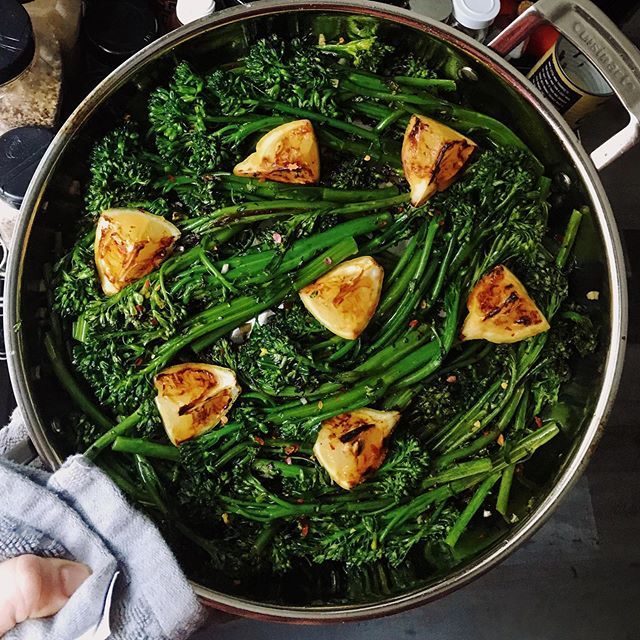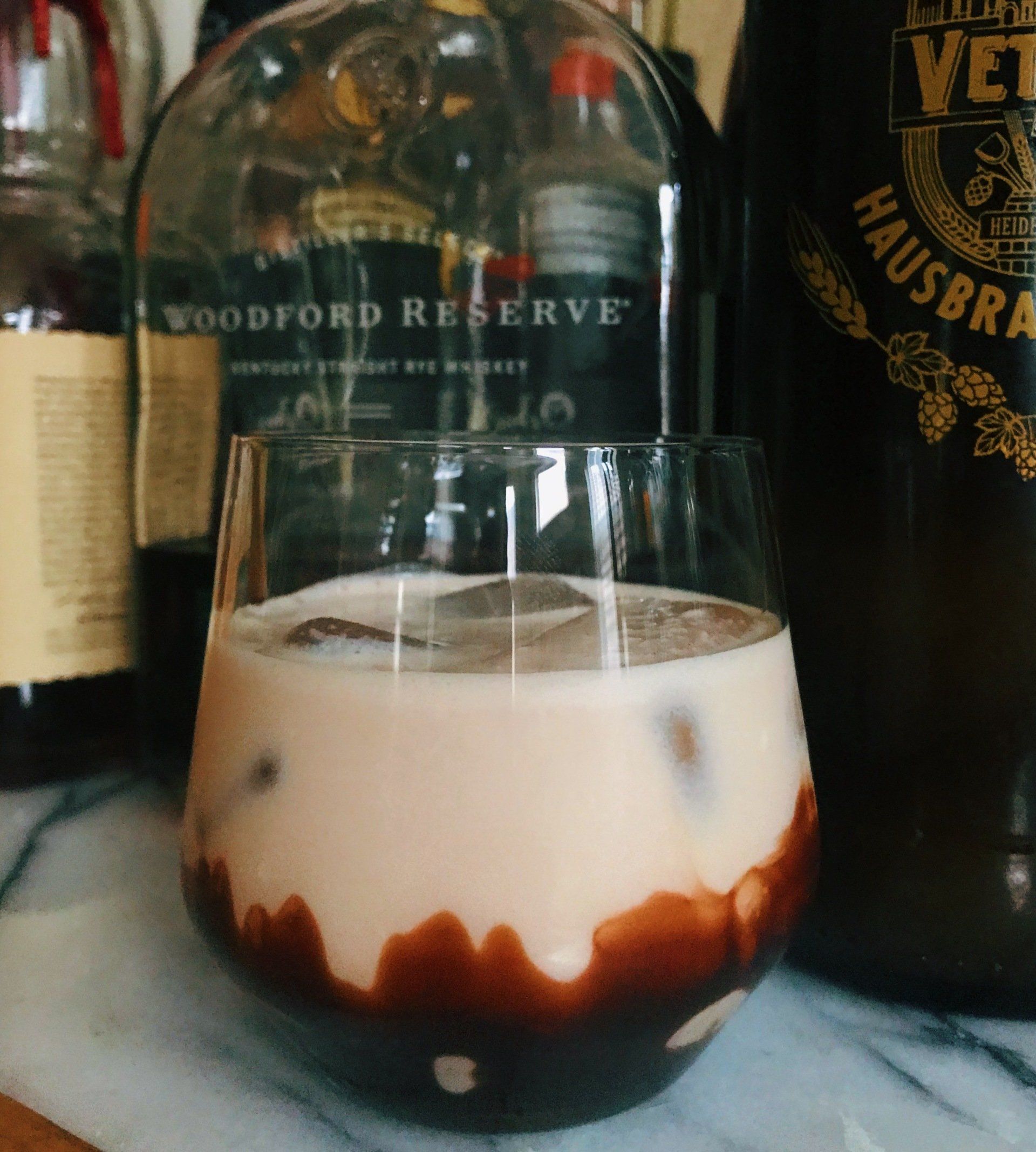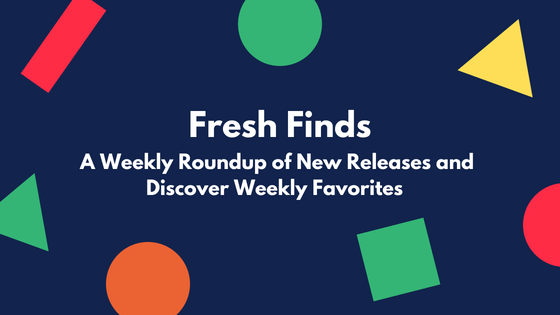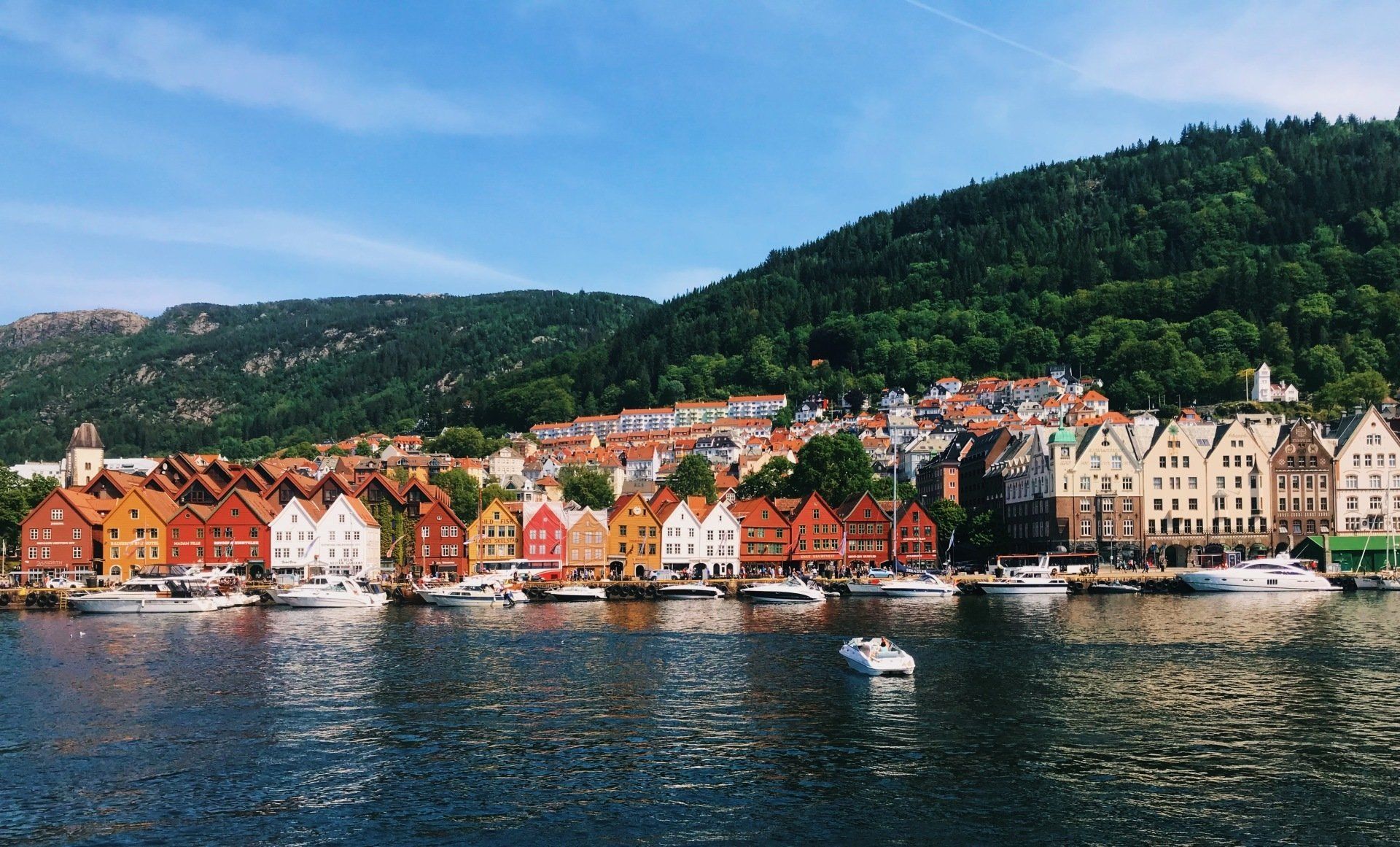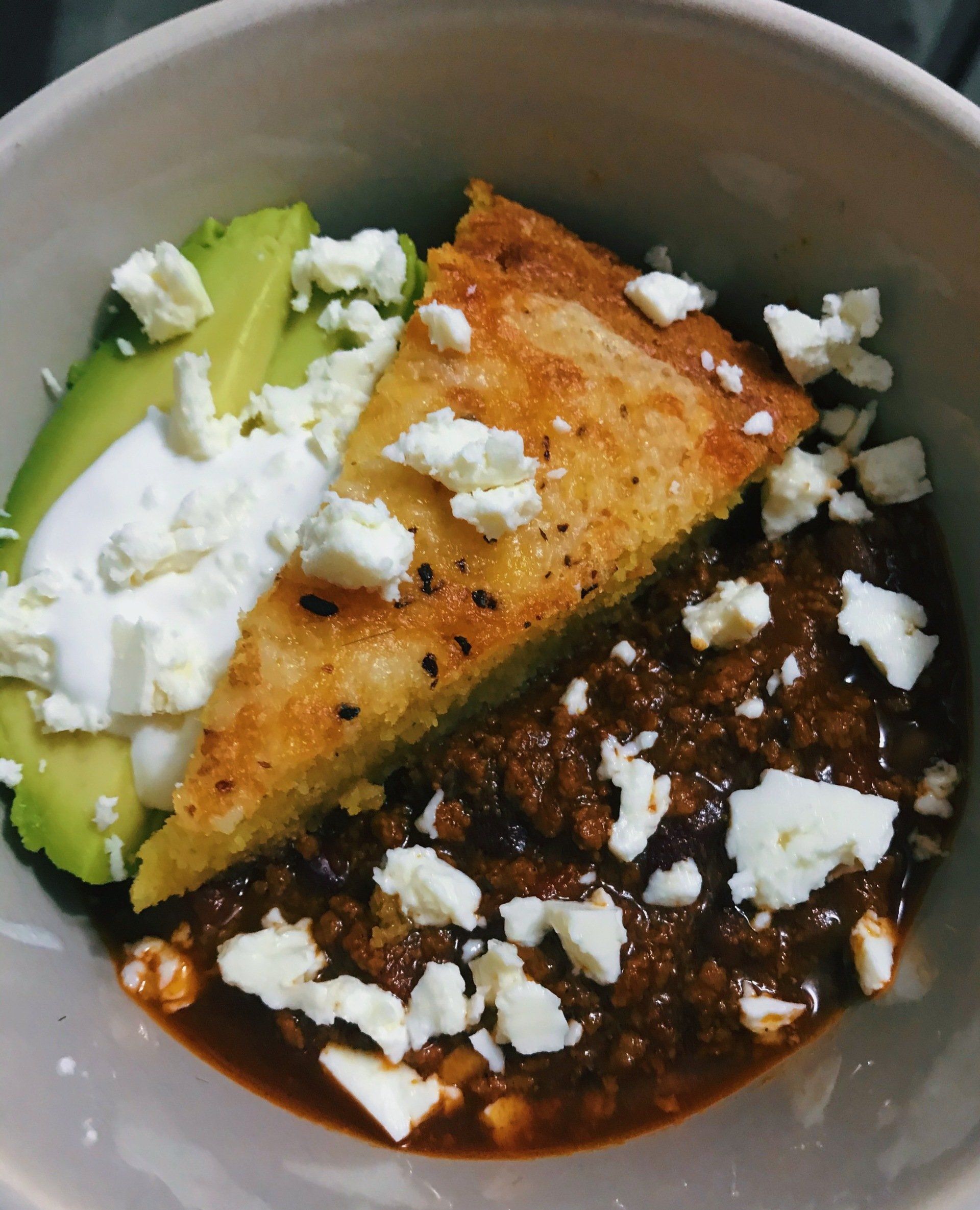By Cole Pettengill
•
November 19, 2019
From the start of my semester abroad in Germany I made it a goal of mine to not spend every weekend in a big city, and to get outside more often. Getting lost in the streets of a foreign city is great fun, but sometimes I prefer to trade alleys and avenues for hiking trails. Norway, having some of the most pristine and untouched nature in the world, quickly became a dream a destination of mine and I vowed not to leave Germany without visiting it. Why Norway? : From Oslo up to Lofoten, there is no shortage of beauty here. The fjords cut deep into the country's mainland creating awe inspiring landscapes, and playing home to colorful fishing villages nestled deep within them. Norway can certainly not be considered a budget destination by nature, but you don't have to spend a fortune to enjoy a weekend here. Oslo, the capital, was once an afterthought. It was an airport you might find yourself flying through to catch a connecting flight. But Norway, and Oslo especially, saw an increase in travel in part thanks to Norwegian Airline's low-cost flights from the United States to points of interest across Europe, including several non-stop flights to cities in Norway, and in part to the exciting food, design and art scenes along with incredible outdoor recreational. the country saw a tourism boom. Oslo has become a true destination in itself with a budding food scene, rapidly developing waterfront district, and a great arts scene. The capital is not the only city worth visiting, however, as Bergen lay just on the opposite coast of the country. Easily accessible from Oslo via a short flight or a (long) scenic cross-country train ride, Bergen is full of charm and will be sure to win you over. It is hard to say that there is a bad time to visit Norway. In the winter months it is possible to enjoy cross-country skiing among a myriad of snow sports. And when the sun has set (if it ever rises) there is a strong possibility of seeing the northern lights. The summer months are no less exciting. Opposite the winter, the sun never really goes down in peak summer which means there is plenty of time to enjoy the country's natural splendors. Go hiking or mountain biking and then enjoy your afternoon evening by the pure waters of one of the many lakes or fjords. The people are very friendly, if a little reserved. Public transportation is generally very quiet and people will tend to keep to themselves around strangers unless engaged. It isn't you, just say hi and ask for help if you need it! Where to Stay?: Oslo Youth Hostel Haraldsheim (Oslo): Part of the Hostelling International network, Haraldsheim is a well reputed hostel with clean facilities, free breakfast, and plenty of resources to help travelers figure out their way around Oslo. It only costs about $35 for a bed in a six person dorm room with linens and a towel included. Considering I have paid that much or more in less expensive countries, I was pleased. It is a bit removed from the city center but easy to access on public transportation with numerous trams stopping just a short walk away from the front doors. It is basic but comfortable ,and an overall good value for the money. Haraldsheim is a worthwhile place to stay when visiting Oslo. Montana Hostel (Bergen) : Like Haraldsheim, the Montana Hostel is also located a bit out of the city center. It is accessible by a public bus that stops just across the street. There are great views over the city and fjords from the property which makes the slightly more distant location worth the effort to get there (though it really is not much effort). Montana offers a free breakfast and the staff organize activities in and around the city for guests to participate in each day. A bed in a four person dorm goes for about $30. If you're lucky like I was, no one else will be staying in any of the other three beds. What to Do (Oslo): Sunbath at Sørenga : Sørenga is a neighborhood on the waterfront in Oslo. There is a small beach and a greater system of docks installed over the water to allow for locals and visitors alike to catch some sun and enjoy a swim in the Oslofjord during the warm summer months. Spend the morning here before it gets too crowded or come back in the evening after the masses have left to enjoy a view of, and maybe a swim in, the cool fjord waters. In contrast, look back into the city to get great views of the modern Opera House and Barcode Project which was completed in 2016. Holmenkollen: This neighborhood of Oslo is where the former Olympic park can be found, including the impressive and iconic ski jump. It is not far out of the city and can be reached by taking the 1 train in the direction of Frognesteren easily. The panoramic views from the top of the jump are debatably the best in the city, and the ski museum underneath the jump showcases more than 4,000 years of skiing history. Skiing is no joke in Norway. No snow is no excuse not to get out and practice. Take a walk around the park and you will find a paved cross-country skiing training track with people racing around it on what look like very long roller blades, and a bit further down the hill is the practice ski-jump where you may be lucky to catch a practice. The skiers race down the hill on wetted turf before making their jumps hurtling through the air. It is an exceptionally exciting sight to see. There are a series of hiking, biking, and walking trails to enjoy in this area, too. Ekeberg Sculpture Park : Ekeberg Park is sure to impress anytime of the day, though I recommend coming here at sunset. Wander the grounds here and get lost in a world of imagination. You never know what you will find behind the bushes and in the trees here. The cover photo for this website was taken there. You will find excellent panoramas of the city skyline and views into the fjord. There is a restaurant here if you like your food with a view. Munch Museum: Spend a few hours browsing the works of the famous Norwegian painter, Edvard Munch. (which you could spend a good few hours in alone). To some contest, the museum is slated to move to the waterfront with the Opera House and Barcode. No matter where it is located, it is worth the time to stop in followed or preceded by a stroll through the botanical gardens, conveniently located right next to the Other Points of Interest: Karl Johans Gate is the main shopping and pedestrian street in the city and offers excellent people watching. It leads up to the royal palace. Stop into the Old Town to see some traditional Oslo architecture, and browse the arts and vintage markets in Grünerløkka. Catch a show at the iceberg inspired Opera House or pack a picnic and enjoy it on the roof all the same. What to Do (Bergen): Hike Mount Ulriken: Mount Ulriken is the highest peak of the seven mountains that surround Bergen. This is a popular hike so I recommend taking advantage of the extended day light period and getting out early. I started my hike at 6:30 in the morning and met very few other people on the trail. The sun was shining and the sky was bright blue at this time. Take in the views of the surrounding mountains, city, and fjord from the peak before starting your descent. I reached the bottom again around 8:30 (I hiked quickly and spent little time at the top) where I walked against large crowds of people starting on their hike to the top. There is a cafe at the top, and a cable car Ulriken643, too. Take a Fjord Tour: Bergen is considered the gateway to the fjords which means you have to go for cruise in one. Go with Rødne Cruises for a three hour trip in and out of the Osterfjord. On a longer trip, I may have sprung for a longer ride into the Sognefjord, the deepest fjord in Norway, but I had limited time to spend so three hours proved to be perfect. Deep in the fjord, you will small villages where colorful cabins dot the shore, and dramatic mountains rise behind them. The boat taxied up to a waterfall where a crew member filled up a bucket of fresh mountain water. A tasting is offered of course. It was exceptionally crisp, cool, and refreshing, and exceptionally clean. Fish Market: Bergen's fish market might be one of its most well known sites. The outdoor market has been a staple of the city since as far back as 13th century. Today, vendors sell fish, fruit, flowers, and other locally produced goods. While you're here, take a walk around the harbor and admire the charm of the Bryggen neighborhood where the colorful wooden shops are nestled together in a tight row. The Leprosy Museum at St. Jørgen's Hospital: Between 1850 and 1900 Bergen had the largest concentration of leprosy patients in Europe, treated in three different hospitals. St. Jørgen's was the most active, treating patients from the 15th century to the middle of the 20th century. The present day building in which the museum is housed dates back to the 18th century. The hospital was raised on the site of the Nonnester convent in the 1400's. It is likely the food and herbs used to feed and treat the patients were supplied by the convent. Today, St. Jørgen's does not stand in memory solely as a monument to the individual battles lost to Leprosy, but as a testament to the extensive and ground breaking research performed here. Where to Eat (Oslo): Illegal Burger: Burgers are having a real moment in Norway right now. It seems every other restaurant is serving up the beef patties but few do it much better than Illegal Burger. If you are on a budget then this is also a good option as it is one of the cheaper eateries in the city. They have an excellent selection of burgers from traditional to creative and good selection of beer, too (including an IPA brewed specifically for the restaurant). A lunch here wont cost you much more than $15- yes, that is considered a cheap meal by Norway's standards. Villa Paradisio: You can't go anywhere in Europe without finding Italian food and I'm not complaining about it. Villa Paradisio is serving up great pizzas and other Italian fare at fair prices right in the center of Grünerløkka. There will likely be a wait- which I always take to mean a restaurant is good- so plan accordingly. A margherita pizza goes for about $12. Lorry Restaurant: I will never leave a place without eating having traditional meal first. For this I went to Lorry Restaurant which serves up in Norwegian classics in an eclectic pub-like setting. I order the blue mussels fresh from the North Sea. The restaurant also has hundreds of beers available so it is impossible not to find something to pair perfectly with your meal. You will certainly pay a little more here but it is worth it. Go early for a seat on the patio. If you can't get one there the inside is just as nice. Where to Eat (Bergen): Trekroneren: I was only in Bergen for about 18 hours so I did not eat much. I had my free breakfast at the hostel but was hungry again after I got off boat at the end of the fjord tour. I did not have much time to eat before having to go to the airport so I stopped at the Trekroneren for a sausage. The little shack is located just off the harbor and serves up a variety of sausages through a little window. I tried the reindeer sausage with lingonberry sauce, mustard, and fried onions. It was the perfect send off before heading to the airport. The best part is that it only cost $8. How to Get Around: Train: Take the train from Oslo to Bergen. The journey takes about seven hours but you will be captivated by the beautiful vistas the entire time. Watch through huge windows as farms, glaciers, mountains, and the rest of the pristine Norwegian countryside roll by on the horizon. I flew back to Oslo from Bergen the next day (the flight is less than an hour long) but the train journey is one everyone visiting Norway should make. Public Transportation: You will definitely want to make use of the public transportation in Oslo. the downtown and city center is easy enough to walk around but there are plenty of destinations just outside the city that are much more easily reached by metro, bus, or tram. Similarly in Bergen, you can walk everywhere in the downtown but you'll want a bus pass to get around to the surrounding areas (hostel included). Walk: As I said previously, walking is a viable option in the city centers and around individual neighborhoods (but not necessarily between them). Restaurants, bars, and other points of interest are close enough to each other, plus you'll see more of the city this way. Just be sure to wear a comfortable pair of shoes! Rent a Bike: I did not do this myself but I saw plenty of people on bikes around the city and many bike rental outposts. Both cities are bike friendly and this is certainly an efficient way to get around. Despite only spending three days in Norway, I did as much as I could and got to see a great deal of the country. I know there is more there that I want to see but and more than I will probably be ever to see. The untouched nature and pure beauty of Norway should land it a spot on any traveler's bucket list. This will likely be a country you'll want to return to time and time again.

